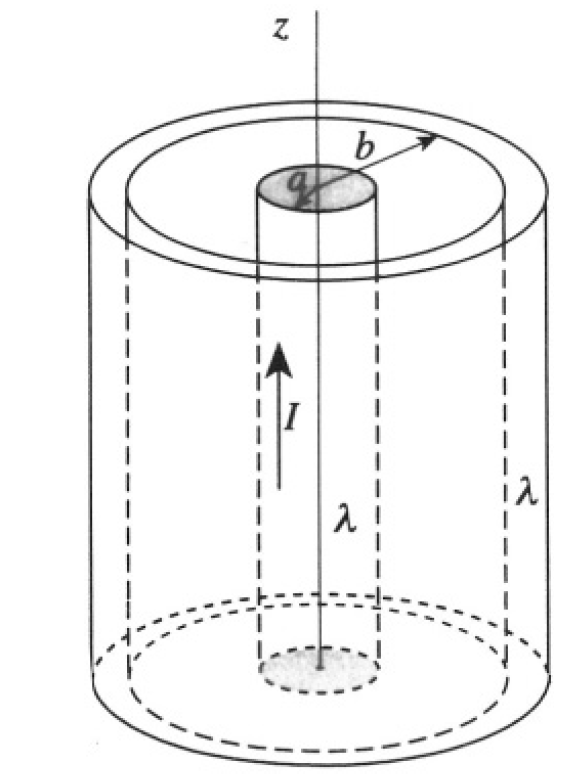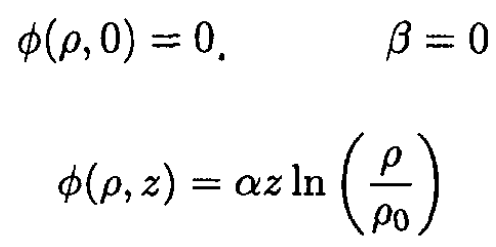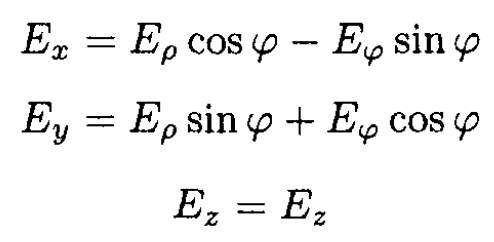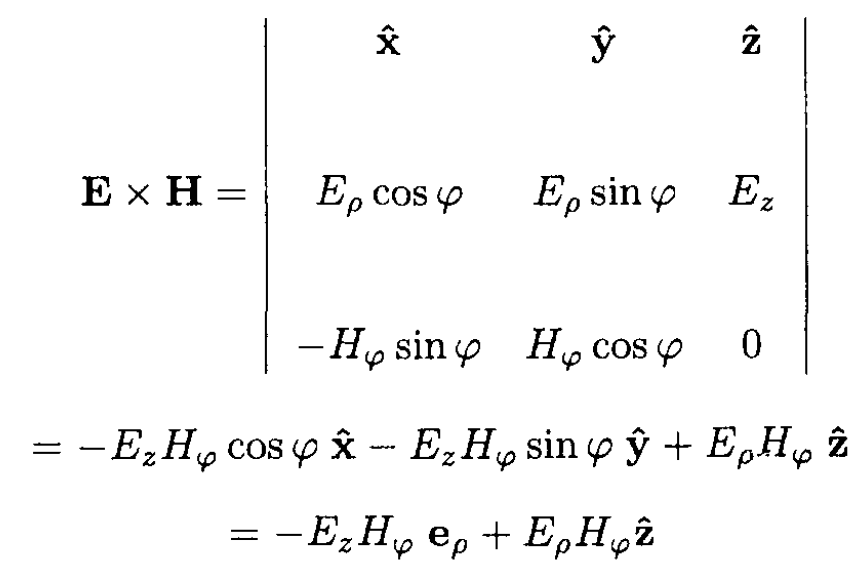
Coaxial Cable and Poynting Vector
 المؤلف:
Sidney B. Cahn Boris E. Nadgorny
المؤلف:
Sidney B. Cahn Boris E. Nadgorny
 المصدر:
A GUIDE TO PHYSICS PROBLEMS
المصدر:
A GUIDE TO PHYSICS PROBLEMS
 الجزء والصفحة:
part 1 , p 64
الجزء والصفحة:
part 1 , p 64
 8-8-2016
8-8-2016
 2844
2844
Coaxial Cable and Poynting Vector
The infinitely long coaxial line in Figure 1.1 carries a steady current I upwards in the inner conductor and a return current I downwards in the outer conductor. Both conductors have a resistance per length (along the axes) λ. The space between the inner and outer conductors is occupied by

Figure 1.1
a vacuum. The radius of the inner conductor is a, and that of the outer conductor is b. In the following, use the cylindrical coordinates, ρ, φ, z. In these coordinates,

a) Find the electrostatic potential and the electric field in the region a < ρ < b. Assume that Eρ (ρ, φ, 0) = 0.
b) Find the magnetic field in the region a < ρ < b.
c) Calculate the Poynting vector in the region a < ρ < b and integrate it over the surface of the volume bounded by ρ = a, ρ = b, and –l/2 ≤ z ≤ l/2. Comment on the physical implications of your result.
SOLUTION
We have Laplace’s equation in cylindrical coordinates whose solution is
 (1)
(1)
From the boundary conditions,
 (2)
(2)

Figure 1.2
Integrating the voltage drop along the cable (see Figure 1.2), we find
 (3)
(3)
and so

resulting in
 (4)
(4)
The electric field
 (5)
(5)
b) The magnetic field in the region a < ρ < b can be found from
 (6)
(6)
c) The Poynting vector is
 (7)
(7)
Transforming E into Cartesian coordinates, we have
 (8)
(8)
The same transformation applies to H, so we obtain
 (9)
(9)
So
 (10)
(10)
We now write the flux Fi and Fo into the inner and outer conductors, respectively, from (10):
 (11)
(11)
 (12)
(12)
where R is the resistance of a length of each conductor. The total flux going into the conductors F = Fi + Fo = 2I2R, which corresponds to the Joule heating of the conductors. Since there is no current in the vacuum between the conductors and the conditions are stationary, Poynting’s theorem gives
 (13)
(13)
The total flux is zero. There must also be a corresponding negative flux Fe into the volume through the ends to satisfy Poynting’s theorem. Indeed
 (14)
(14)
as expected.
 الاكثر قراءة في مواضيع اخرى
الاكثر قراءة في مواضيع اخرى
 اخر الاخبار
اخر الاخبار
اخبار العتبة العباسية المقدسة


